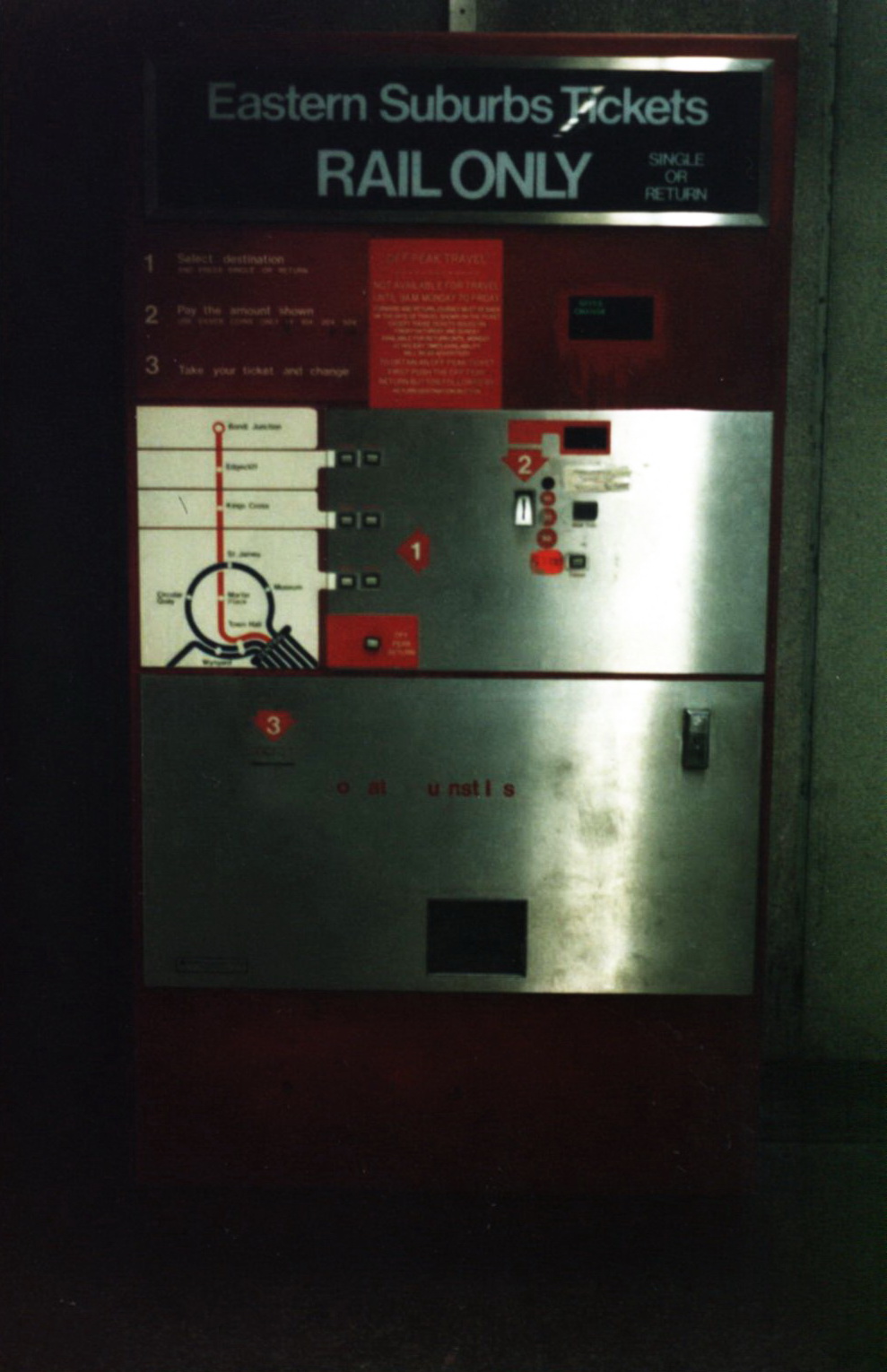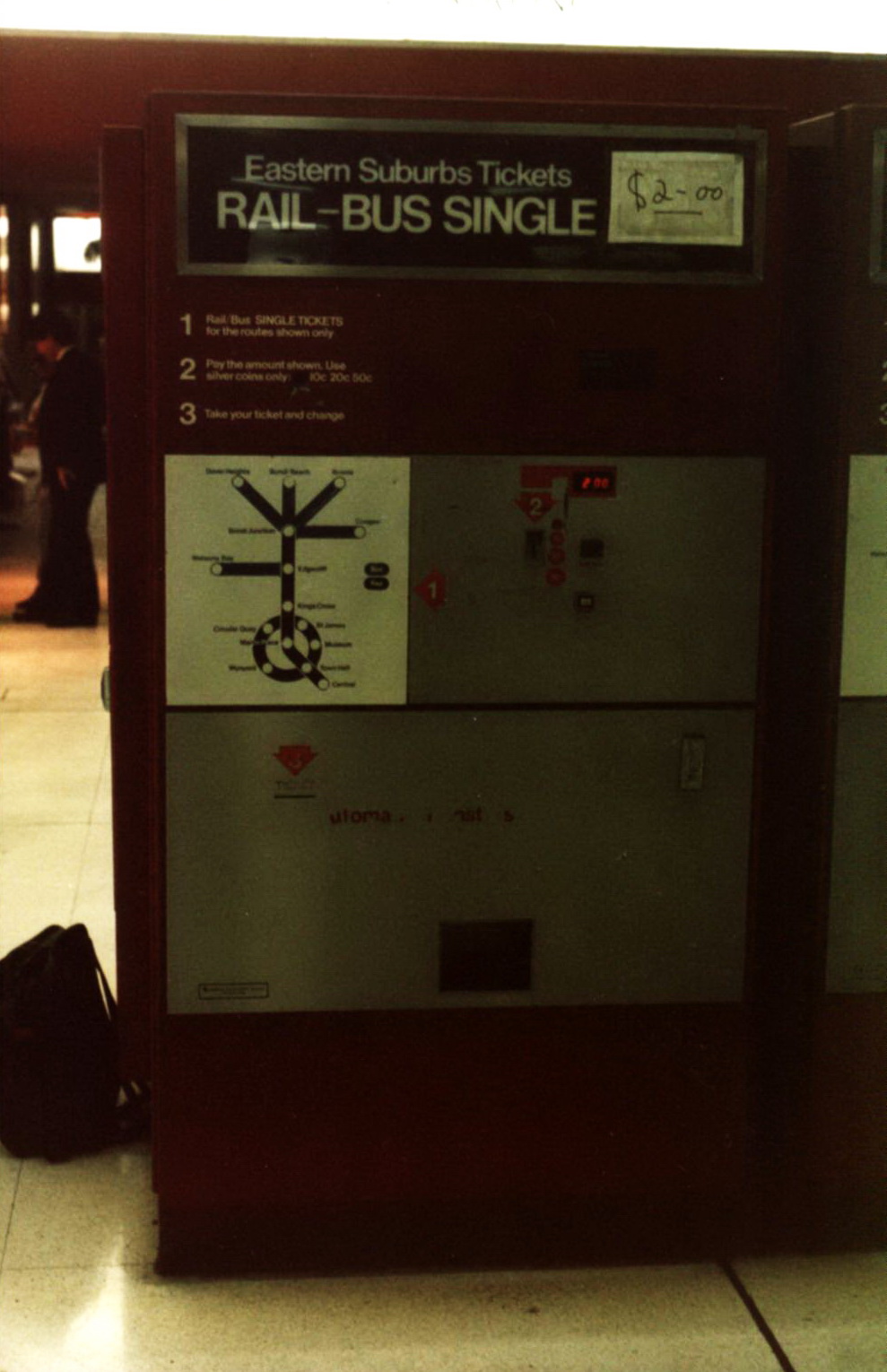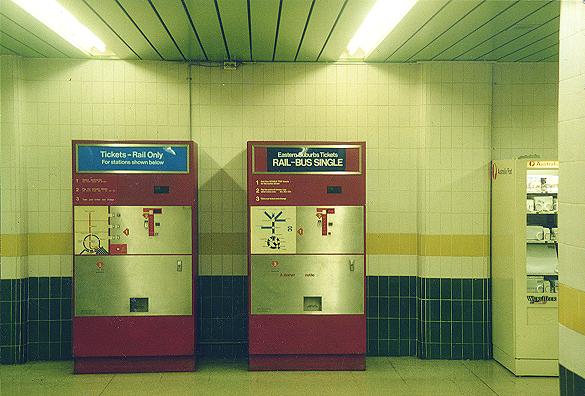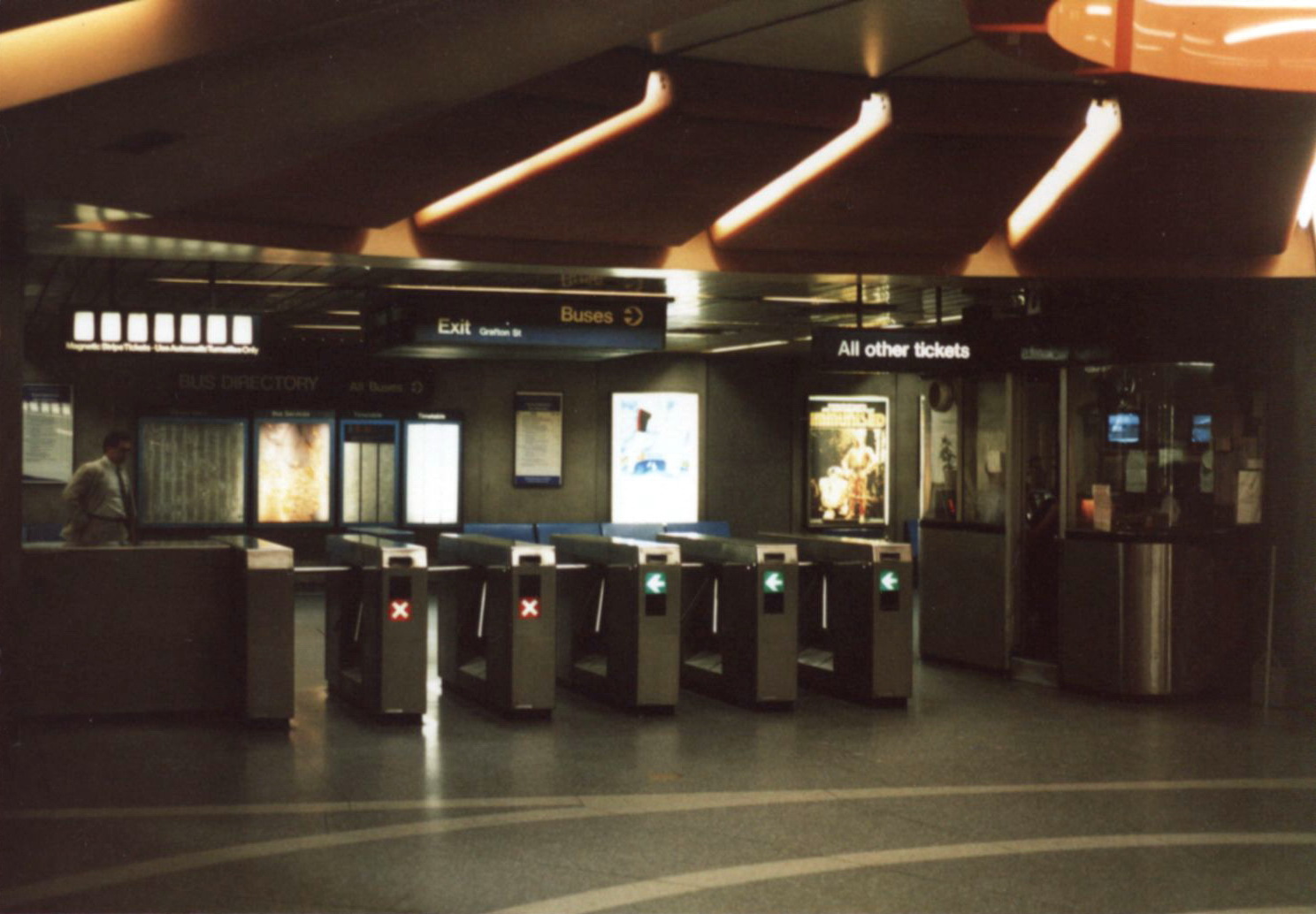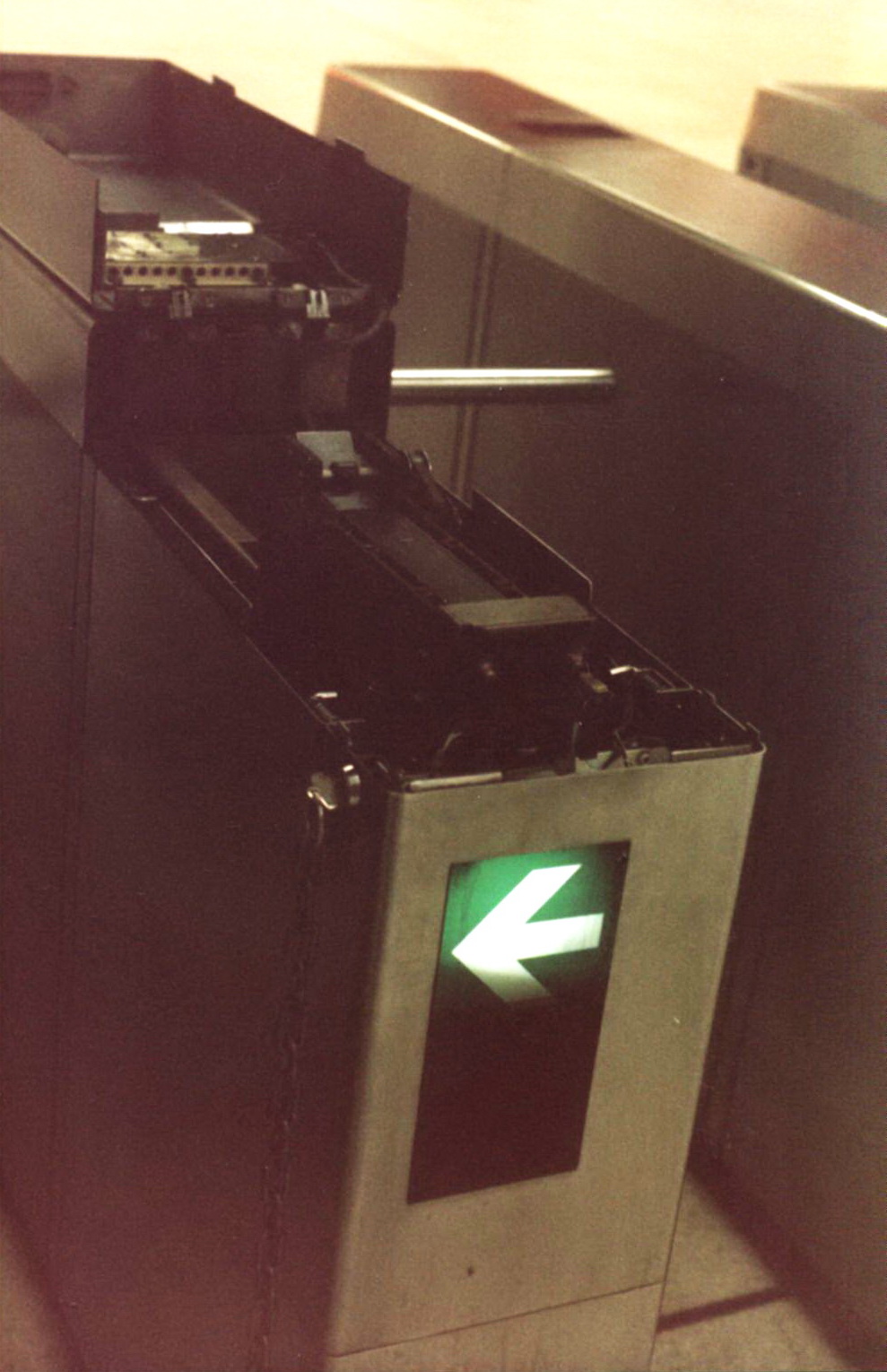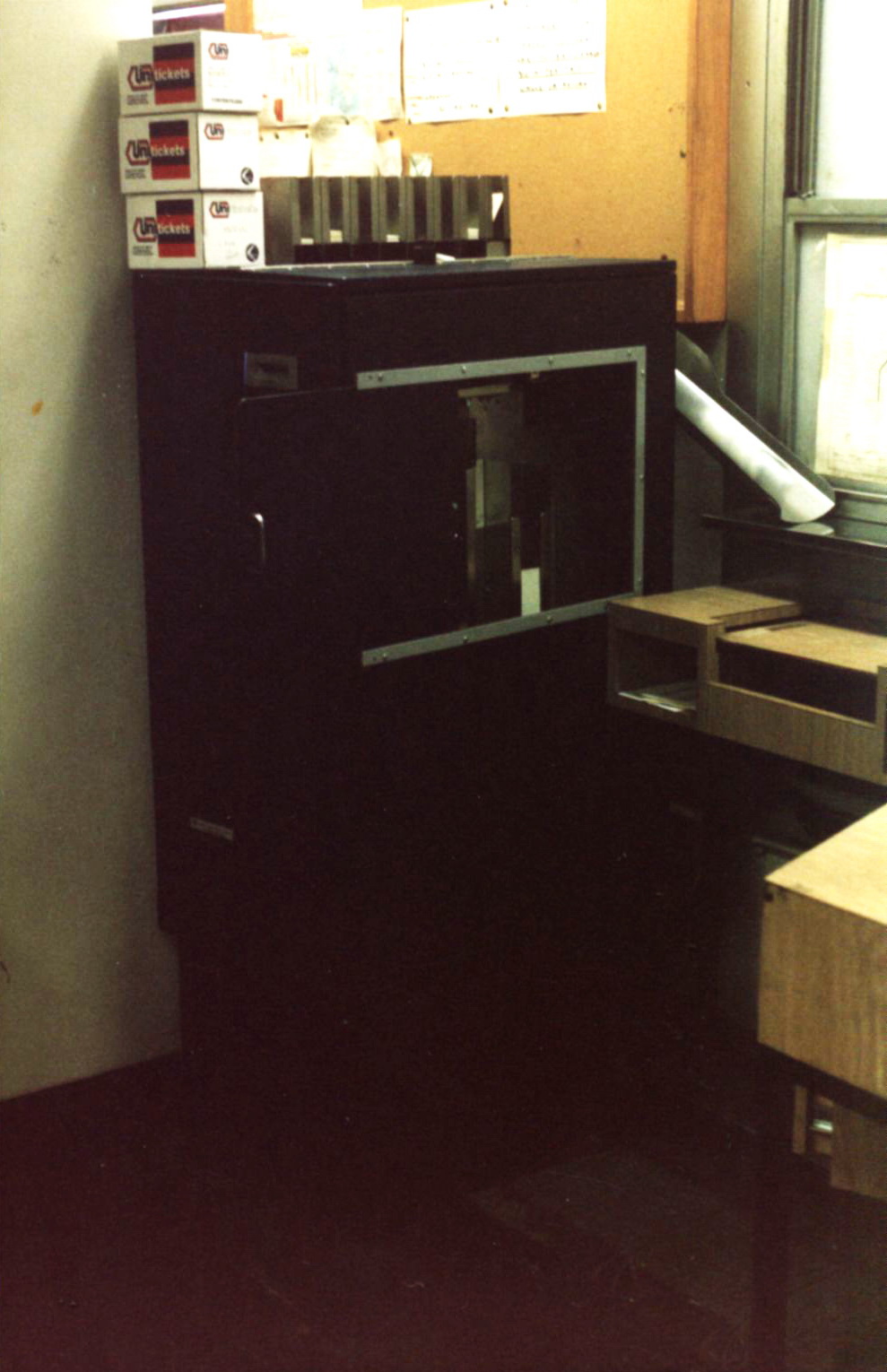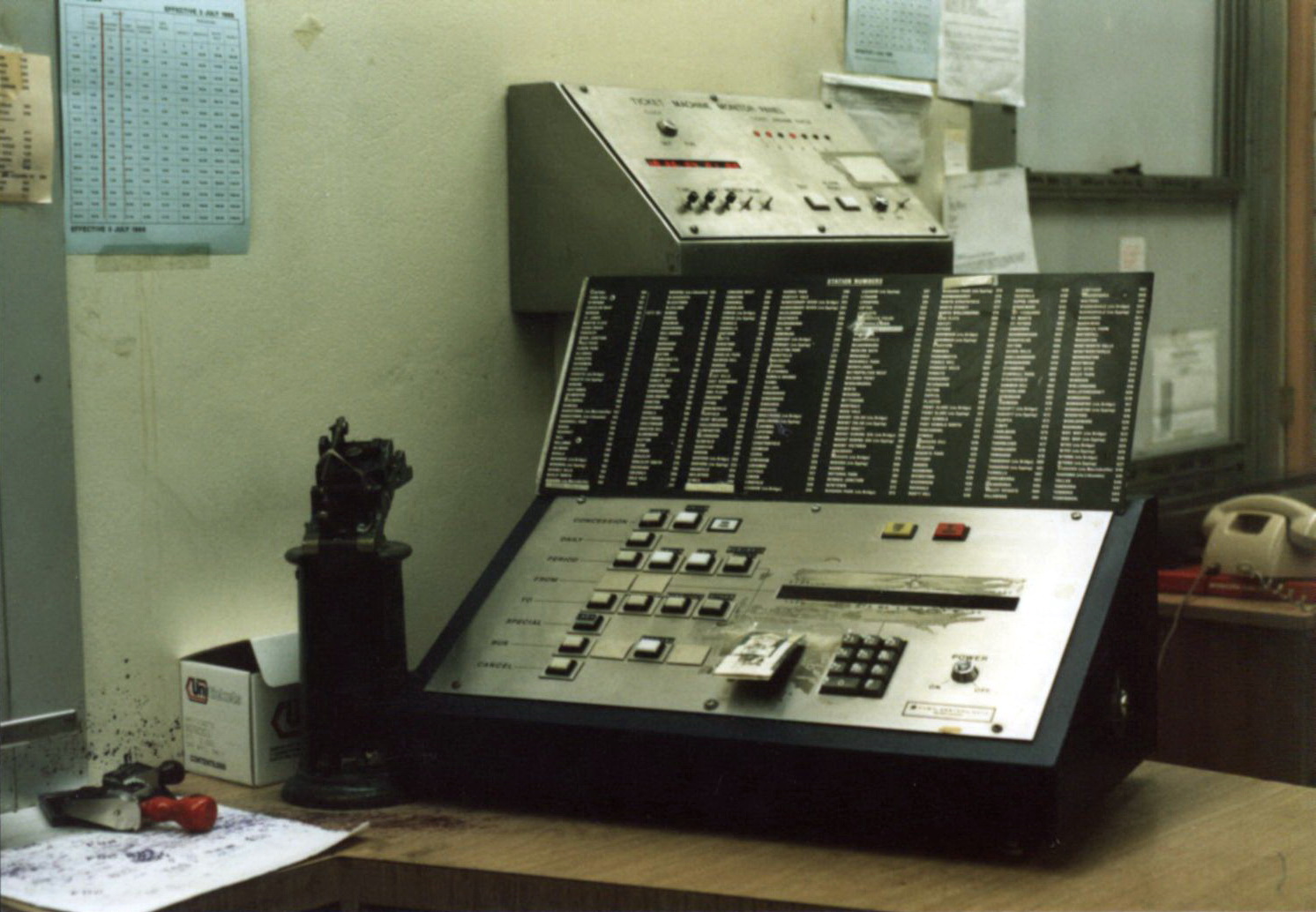 |
|
Eight booking office machines were supplied. These were installed in the booking offices at each of the four ESR stations. Another was installed at the ESR window on the concourse at Town Hall. One was also installed a little later as part of the modernization of the Chalmers Street booking office at Central station which was in the vicinity of the concourse above the ESR platforms. It is likely that there were two machines at Bondi Junction and Martin Place as these were the busiest ESR stations. This would account for all eight machines.
The booking office machine consisted of two components. To the right of the booking clerk was the entry keypad with the station number panel fixed on top. This panel had 8 columns comprising nearly 300 station names (including via Bridge and via Epping) covering the Sydney Suburban and Outer Metropolitan areas as the fare structure existed in 1979. This meant that magnetic strip tickets could be issued to stations as far out as Kiama, Yerrinbool, Medlow Bath and Wyee. The first eight names at the top of the first column covered the flat fare to the City Circle stations which included Kings Cross. The next two stations were Edgecliff and Bondi Junction. After this the station names were arranged alphabetically, the first name in each group having an enlarged capital letter.
The push buttons below are less easy to distinguish because of numerous changes over the years but a great many sequences can still be established. The rows are arranged as: Concession, Daily, Period, From, To, Special, Bus, Cancel. It appears the default status of the machine is "Adult Single". The concession row probably included Minifare (later Off Peak). The Daily button was used for a return ticket. The four periodical buttons were weekly, quarterly, yearly and rail/bus. Only the weekly was available as a magnetic strip ticket by January 1989. The from row may have allowed the issue of extension tickets - the first button being from City stations and the second from other points. It is not clear why there are four buttons on the "To" row, but the last two are labelled for a specific fare type - Manly Ferry? The use of "Special" is unknown. The Bus row would originally have been single, double trip, 12 trip (later 10 trip) and weekly. The last button is the self-explanatory "Cancel". The destination station code was entered using the numerical keypad on the right. A progressive digital readout was dislayed above. The issue button is hidden under the ticket taped to the fascia. |
